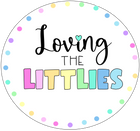Here is a hard truth.
For many years, I basically taught my Preppies to guess, not to read.
The reality is that what I learned at uni about how to teach reading, doesn’t work.
Back in the day when I wasn’t aware there was anything wrong with what I was doing, I felt pretty good running my guided reading groups. I knew what strategies to teach the kids. “Look at the picture!”, “Look at the first sound”, “What word would make sense?”
Fast forward a few years when I began learning about the Science of Reading, and I realised everything I had been doing was wrong.
So, what should we include in our small reading groups?
Perhaps you’ve asked yourself that exact question? I sure have. I knew what I didn’t want to include in my small reading groups, but I had no clue what to replace it with.
I’d never had any training in it.
I’d teach my students to decode. I’d say things like, “Look through the whole word!”, but after that, I wasn’t sure what else to do.
I felt like my small reading groups were a fumbling, ‘winging it’ kind of mess.
I’d actually do a silent cheer whenever something clashed with our reading lesson, meaning I couldn’t read with a small group.
An actual cheer.
That just shows you how much I wasn’t enjoying these small group lessons.
Enough was enough. I needed to educate myself.
Here’s what I do in my small reading groups now
I’m definitely not a Science of Reading expert, but I went and did a bunch of reading, and this has been working for me. Hopefully it gives you some ideas of what you could do in your small reading groups.
1. Begin with a phonological/phonemic awareness warm up
This takes literally one to two minutes to complete but it is a valuable warm up.
Phonological awareness could be:
- Count the words in these sentences
- Do these words rhyme?
- Repeat these sentences after me (Alliteration)
Phonemic awareness could be:
- Isolating sounds e.g. What is the first/middle/last sound in these words?
- Blending phonemes e.g. /m/, /o/, /p/ = mop
- Substituting phonemes e.g. Say cat. Change /c/ to /b/
- Deleting phonemes e.g. Say man. Without the /m/ it’s…(an)
2. Phonics focus
Next, I discuss the new sounds being introduced. If you are using decodable books that follow a scope and sequence, new sounds will probably be introduced each lesson. Explicitly teach the new sounds, and review the previously introduced ones.
3. High-frequency words focus
Then, I teach about the new high-frequency words that are being introduced. You could use a word mapping tool to help students to tap, map, and write the words. If you are short on time, you could verbally explicitly teach if there is a tricky (or irregularly-spelled part) that students have to remember by heart. Quickly review previously learned high-frequency words.
4. Blending practise
Next, we practise blending. Using the sounds the students have learnt so far, you could write/make some words, and have students practise blending the sounds together to read the words. This could be done with mini alphabet flash cards, or simply on a whiteboard.
5. Reading
Next, we read the book together as a group. You might choose to do echo reading (where the teacher models reading and the students echo the sentence), or choral reading (where you read the book together as a group).
Back in the day, I used to do ‘round robin’ reading, where one student would read at a time, and the others were meant to follow along. But it’s not considered best practice anymore. Firstly, the child reading is put under a lot of pressure reading in front of their peers. And secondly, whilst the rest of them are meant to be following along, they never really do. It’s far more engaging to have students choral read together.
6. Answer questions about the book
After reading, ask some questions about the book. This will help you to assess whether students are understanding what is being read.
You could ask literal questions (where the answer is right there in the book), inferential questions (where students have to use some prior knowledge to answer), or evaluative questions (where students need to move beyond the text to give their opinion on a question).
7. Encoding practise
Next, we practise encoding. Encoding is the opposite of decoding. Decoding is reading, encoding is writing. This is where you could use mini-whiteboards, and choose some words from the book for students to have a go at writing. The focus is hearing and recording sounds in words.
8. Dictation
Following this, we do dictation. This is where you could choose a sentence from the story, and dictate it to students to write on their mini whiteboards. Use this time to remind your students about important features of a sentence, e.g. capital letters, spaces, full stops
9. Fluency practise
Finally, I have my students read the text 2 or 3 times (either independently or with a partner) to practise their fluency. During this time, listen to each student read to you, and record any observations (i.e. things they are doing well, things they need to work on).
And that’s it! That’s everything I include in my small reading groups. These tasks align with the Science of Reading.
What if I can't get to all the components in my lesson?
That's OK! We all have different timings for our small reading groups. Just do your best. If you only have a limited amount of time, choose the components that best suit the students.
I usually (but not always) get through each of the above components, but I'm pretty quick and straight to the point! There's zero time to waste.
Want me to plan your lessons for you?
If you're a Prep teacher who is wanting to implement these elements into your small reading groups, you might like to check out a unit of work I wrote.
The unit includes 12 lesson plans, each with their own decodable book, and the unit follows a scope and sequence.
Alphabet cards, high-frequency word flash cards, word mapping tool, sound strips, one-page versions of the decodables, lessons plans - it's all included.
Check out the unit HERE!










